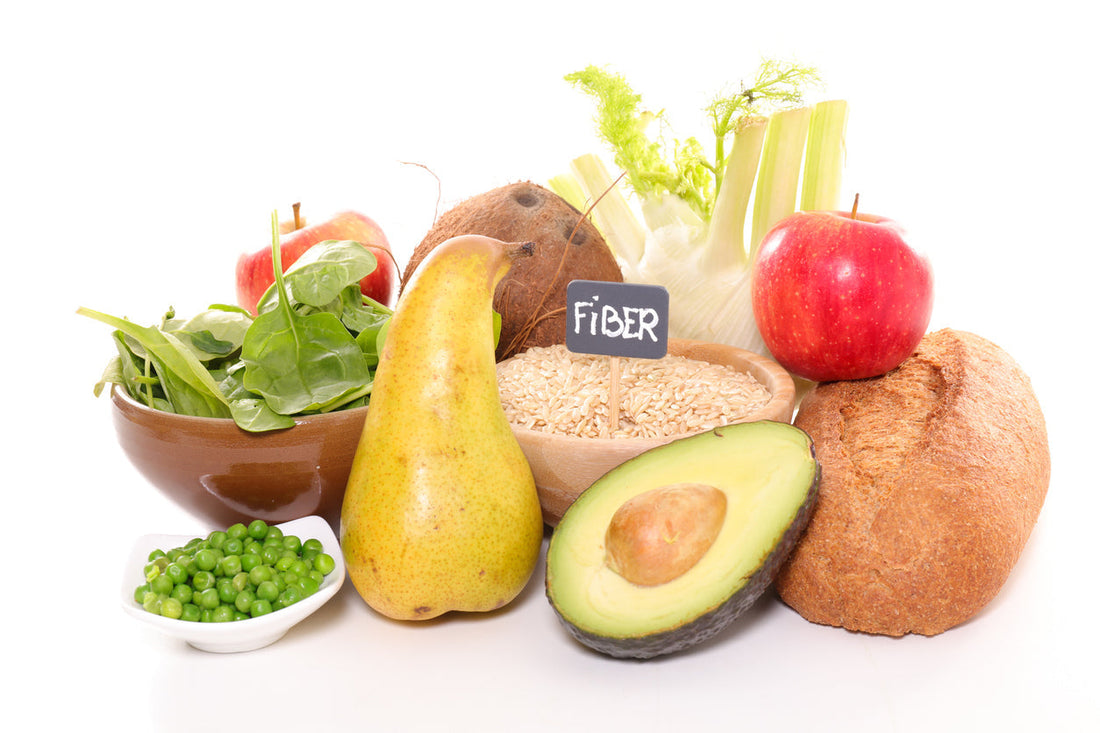If you’ve ever been told to eat more fiber for heart health, that advice wasn’t just a cliché. Fiber, especially soluble fiber, plays a direct and measurable role in lowering LDL cholesterol and reducing cardiovascular disease risk.
The problem? Most Americans get less than half the daily fiber they need to see those benefits. In this post, we’ll explain how fiber works, which foods help most, and how we use it therapeutically in our clinic.
How Fiber Helps Lower LDL Cholesterol: The Mechanism
Your liver uses cholesterol to make bile acids, which are released into your small intestine to help digest fats. Normally, these bile acids are reabsorbed and recycled in your body.
Soluble fiber dissolves in water to form a gel-like substance in the gut. This gel binds to bile acids in the small intestine, preventing them from being reabsorbed. Instead, the fiber-bile complex is excreted in your stool.
To make more bile acids, your liver pulls LDL cholesterol out of circulation. Over time, this leads to a meaningful reduction in LDL cholesterol levels.
This mechanism is well documented in both dietary and pharmacologic research. (Some cholesterol-lowering medications, like bile acid sequestrants, work through the same pathway.) Soluble fiber also slows digestion and fermentation in the gut, which improves blood sugar balance and feeds beneficial gut bacteria that support further cardiovascular protection.
Clinical Impact: How Much Does Fiber Help?
Studies show that just 5 to 10 grams of soluble fiber per day can lower LDL cholesterol by 5 to 10 percent. When combined with a heart-healthy, anti-inflammatory diet, the effect is even greater.
Fiber’s Other Cardiovascular Benefits
Cholesterol reduction is just the beginning. Fiber also:
- Reduces post-meal glucose and insulin spikes, improving metabolic flexibility
- Feeds gut bacteria that produce short-chain fatty acids like butyrate, which reduce inflammation
- Increases satiety, helping regulate appetite and weight
- Lowers blood pressure through improved endothelial function and sodium excretion
Why Most People Fall Short
Despite these benefits, the average adult consumes only 15 grams of fiber per day, far below the recommended 25–38 grams, and even further from therapeutic levels for heart health.
Contributors to the “fiber gap” include:
- Low intake of legumes, fruits, vegetables, and whole grains
- Popular low-carb or keto-style diets without appropriate fiber substitutions
- Lack of awareness about soluble vs. insoluble fiber and their different roles
What We Recommend in Our Clinic
For patients with elevated cholesterol or cardiovascular risk, we often recommend:
- Adding 1 to 2 tablespoons of ground flaxseed daily in smoothies or salads.
- Using a soluble fiber supplement like Florasophy - starting with 1 teaspoon per day and increasing gradually.
- Increase dietary fiber-sources including psyllium husk, chia seeds, flaxseeds, oats, beans like navy beans, black beans, lentils, avocados, brussel sprouts, sweet potatoes, carrots, and berries like blackberries and blueberries.
We also evaluate digestive health and microbiome function to ensure fiber is working in harmony with the rest of the body.
The Bottom Line
Fiber is one of the most powerful and underutilized tools in cardiovascular prevention. It works by binding bile acids in the gut, which leads to a reduction in circulating LDL cholesterol. It also delivers a range of other metabolic and anti-inflammatory benefits.
If you're not sure how to increase your fiber intake without triggering digestive discomfort, or you want a personalized plan to support cholesterol and metabolic health naturally, we’re here to help.

